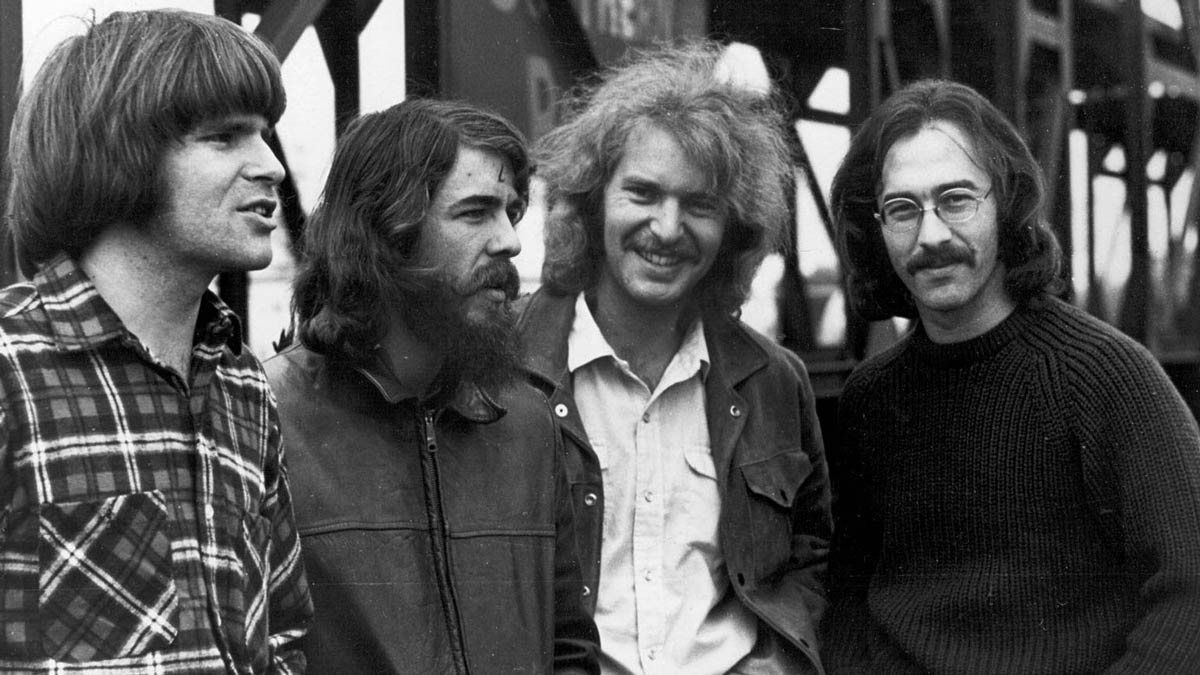The musical odyssey of brothers Tom Fogerty (born in 1941) and John Fogerty (born in 1945) commenced in the late 1950s, leading to a collaboration with Stu Cook and Doug Clifford in 1959. Initially, they went by The Blue Velvets and The Golliwogs before evolving into Creedence Clearwater Revival in 1968.
This lineup persevered until 1971 when guitarist Tom Fogerty made the pivotal decision to part ways with the band. Up until then, they had produced six successful studio albums, and a year later, their final album as a trio, “Mardi Gras” (1972), was released.
But what prompted Tom Fogerty to exit Creedence Clearwater Revival in the early 70s?
The Decision to Depart:
In the intricate dynamics of bands, familial tensions occasionally emerge. Such was the case with Creedence Clearwater Revival, where the friction between Tom and John Fogerty played a role in Tom’s departure. In a radio interview, Tom expressed a desire to sing more and create his songs. However, with John as the primary songwriter and vocalist for CCR, Tom felt constrained. During that era, pursuing solo projects while being a band member was unconventional.
Tom explained, “I had all these songs building up inside of me, with no place to go. I couldn’t contribute to the band, and I did wanna do more lead singing and explore that whole world myself. In those days, people didn’t make solo albums on the side and stayed in the bands. If you did that, you would be disloyal, so you just left. If I wanted to do that today, I would have just stayed with the band and (have done) on the side.”
Unhappiness with Leadership:
John Fogerty recalled in an interview that Tom wasn’t content with him as a leader, adding to their tensions. During the creation of the “Green River” album cover, a disagreement unfolded. John’s attempt to provide direction was met with Tom’s dissatisfaction. John reflected, “Tom wasn’t happy with that. If I had a clue what was going on, I could have probably figured that out. But like I said, I did not. Eventually, Tom actually left the band, and that was, I think, a surprise to me.”
Solo Ventures and Collaborations:
In the aftermath of leaving Creedence Clearwater Revival, Tom Fogerty embarked on a solo career. His self-titled debut album was released in the same year the band released their final record. Notably, Jerry Garcia of the Grateful Dead played lead guitar on Tom’s “Excalibur” (1974). Despite the solo pursuits, Tom collaborated with former CCR members on subsequent albums.
In the ’80s, Tom underwent back surgery, leading to a blood transfusion that resulted in HIV infection, ultimately leading to AIDS. He passed away in 1990 at the age of 48 due to tuberculosis. In 1992, a posthumous album titled “Sidekicks” featuring Randy Oda was released. During his solo career, Tom was also a member of the band Ruby, contributing to albums like “Ruby” (1976) and “Rock & Roll Madness” (1978).
